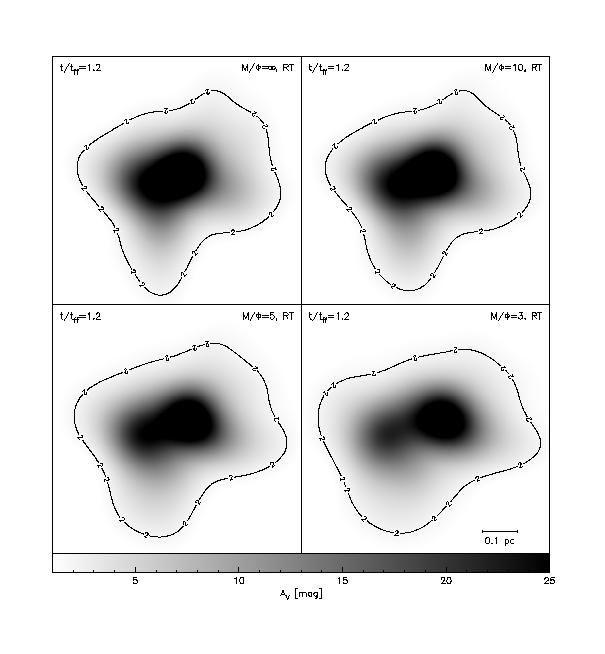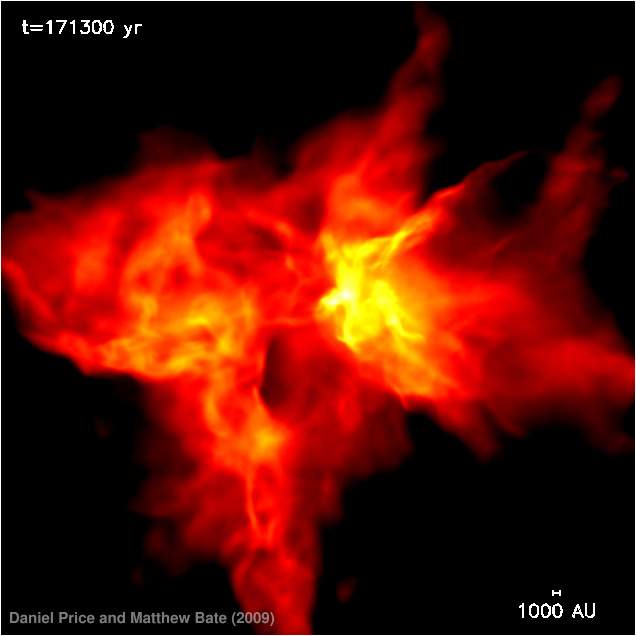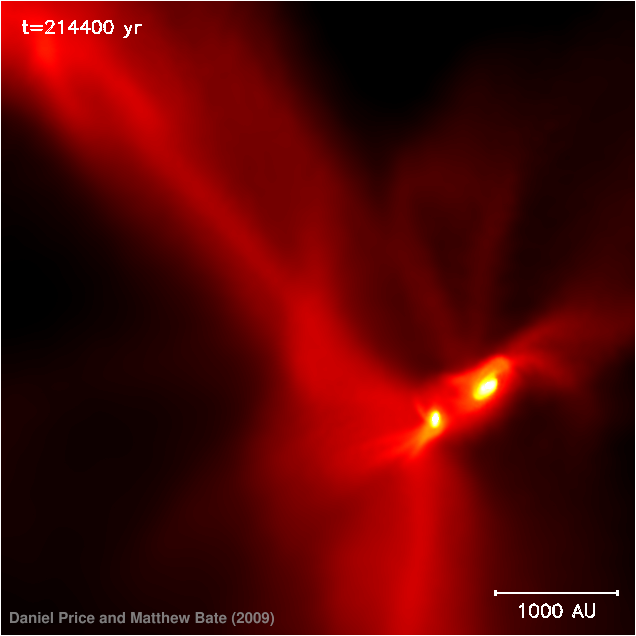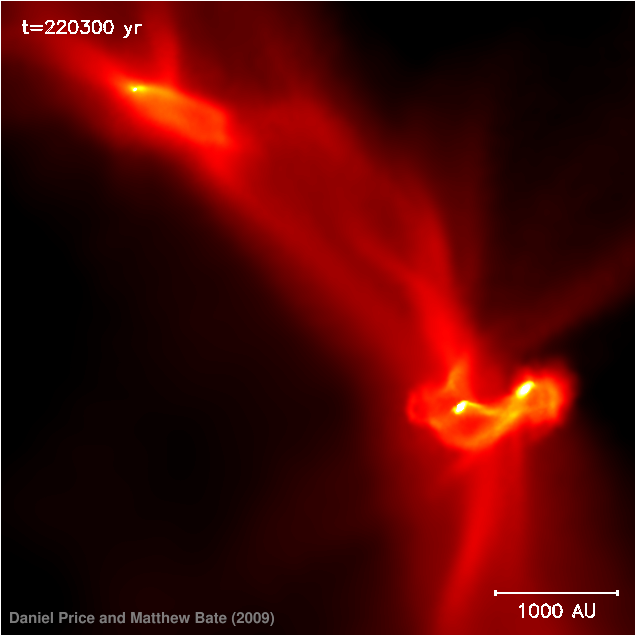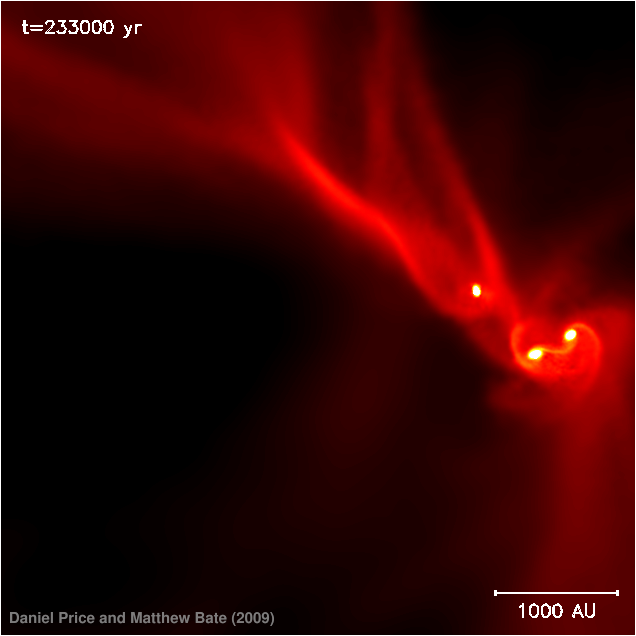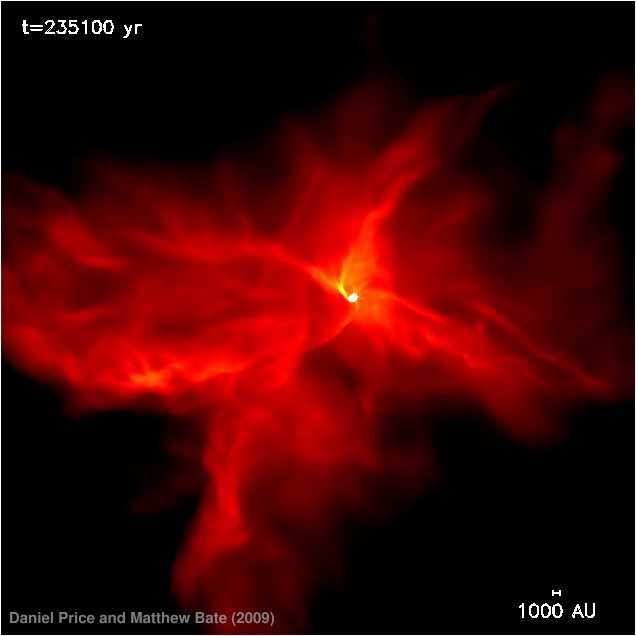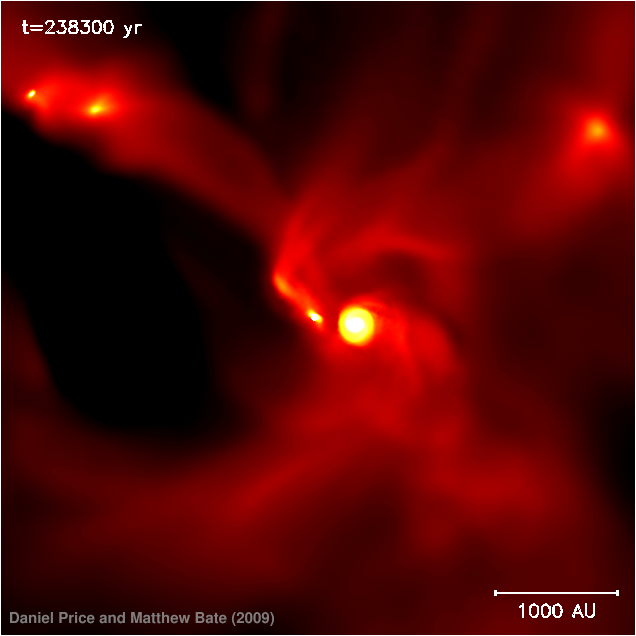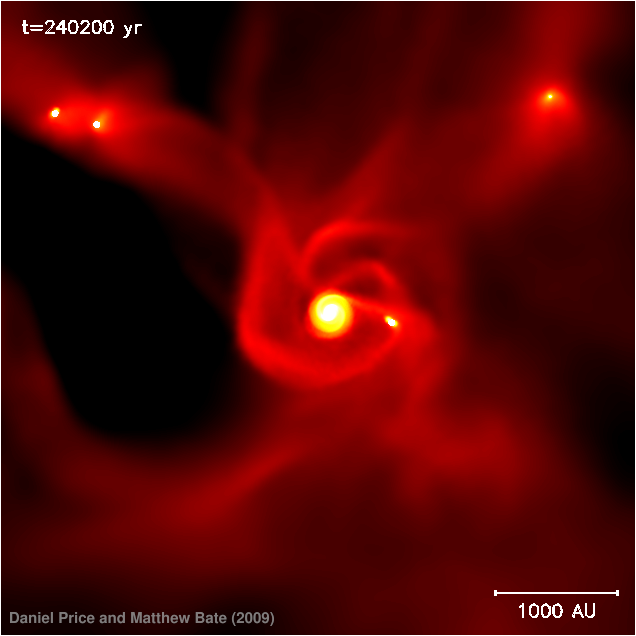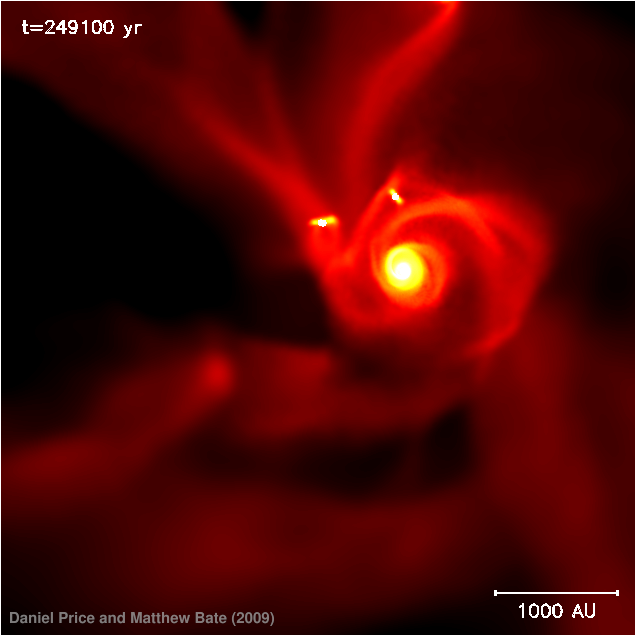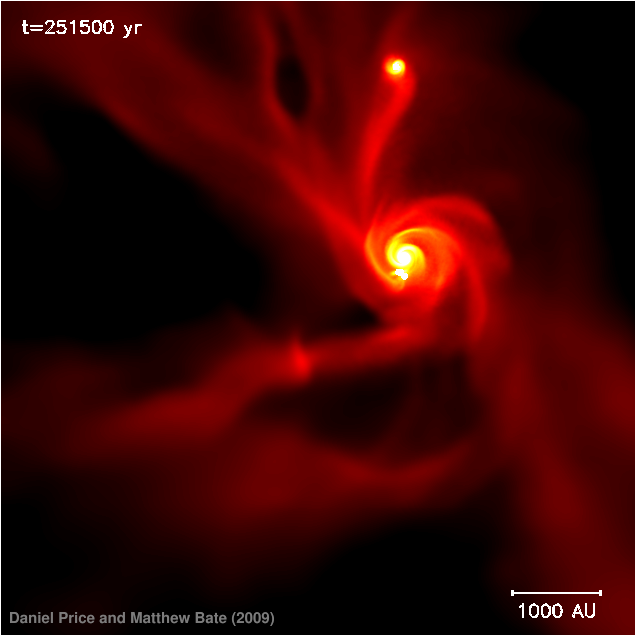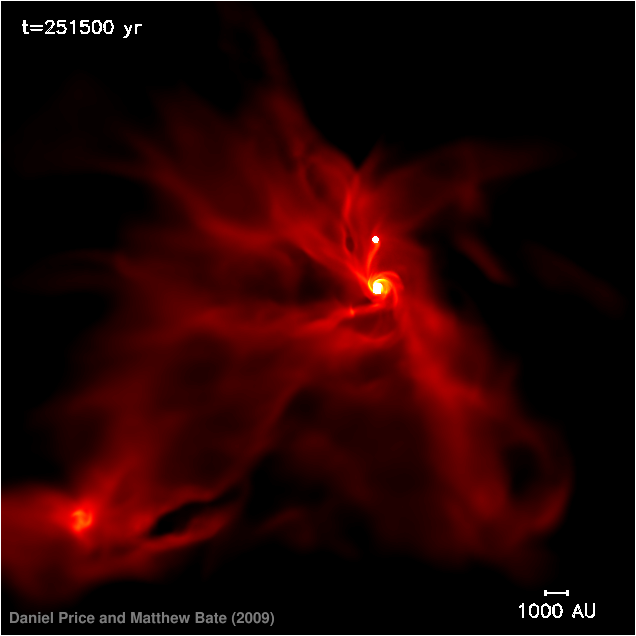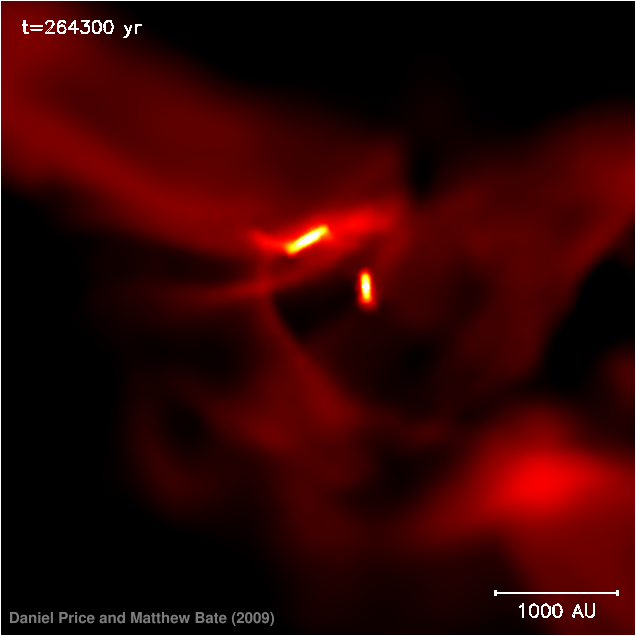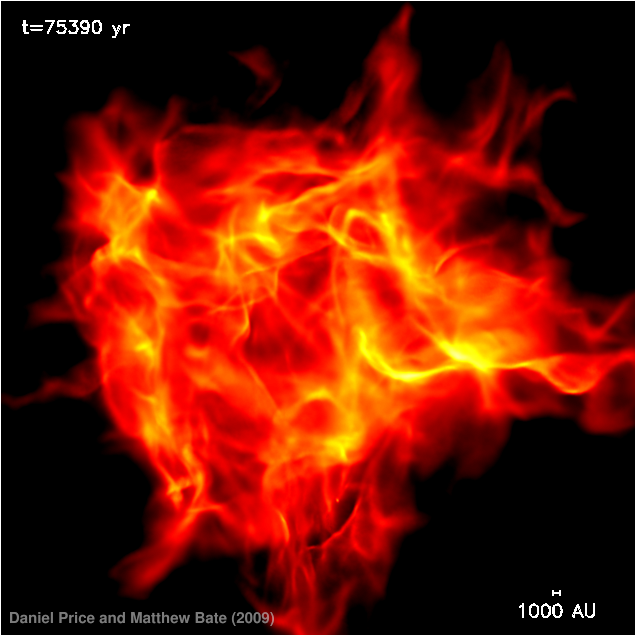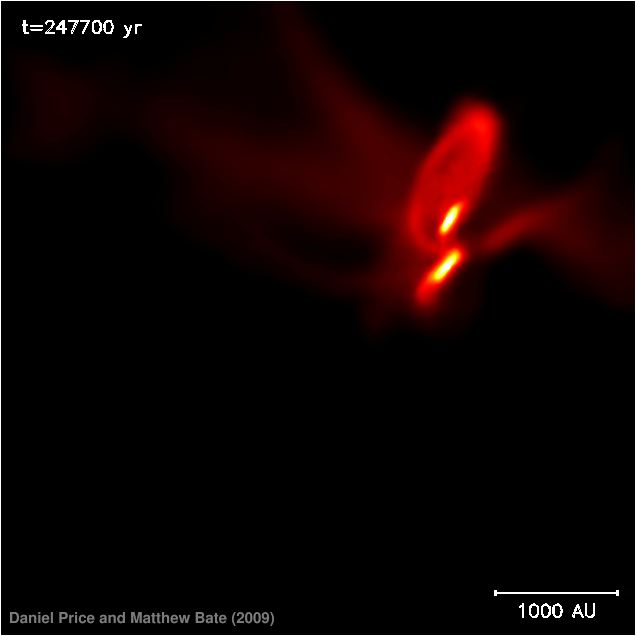Inefficient star formation: The combined effects of magnetic fields and radiative feedback
Daniel J. Price and Matthew R. Bate
Accepted 24/4/09 for publication in Monthly Notices of the Royal Astronomical Society.A non technical description of this work can be found on the research page. See below for movies and images.
Abstract
We investigate the effects of magnetic fields and radiative protostellar feedback on the star formation process using self-gravitating radiation magnetohydrodynamical calculations. We present results from a series of calculations of the collapse of 50 solar mass molecular clouds with various magnetic field strengths and with and without radiative transfer.
We find that both magnetic fields and radiation have a dramatic impact on star formation, though the two effects are in many ways complementary. Magnetic fields primarily provide support on large scales to low density gas, whereas radiation is found to strongly suppress small-scale fragmentation by increasing the temperature in the high-density material near the protostars. With strong magnetic fields and radiative feedback the net result is an inefficient star formation process with a star formation rate of ~10% per free-fall time that approaches the observed rate, although we have only been able to follow the calculations for ~1/3 of a free-fall time beyond the onset of star formation.
[ high resolution pdf (745kb) ]
Conference Proceedings
Price & Bate (2010) "Magnetic fields and radiative feedback in the star formation process",This proceedings also refers to the papers (and movies) on "Magnetic fields in single and binary star formation" (Price & Bate 2007) and "The effect of magnetic fields on star cluster formation" (Price & Bate 2008).
[ price_como09.pdf (352kb) ]
Movies
Movies and images are copyright (c) 2009 Daniel Price and Matthew Bate.
Use is free for non-commercial purposes provided due reference is given (see license conditions below).
Calculations were each performed on 64 cores of Zen, the 1300-cpu SGI supercomputer at the University of Exeter.
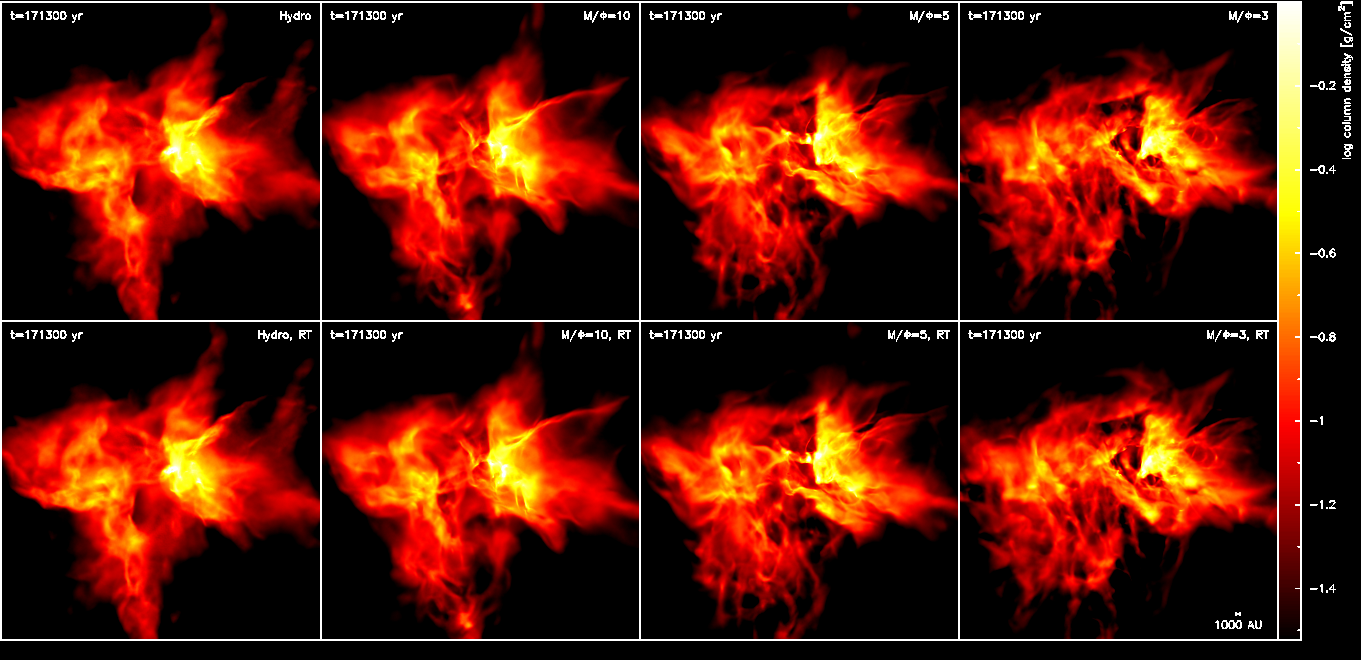
|
Combined movie showing all eight runs of progressively increasing magnetic field strength (left to right), without (top) and with (bottom) radiation from the
hot gas surrounding the protostars.
[ standard quality (5.3Mb Quicktime) ] [ high quality (87Mb Quicktime) ] |
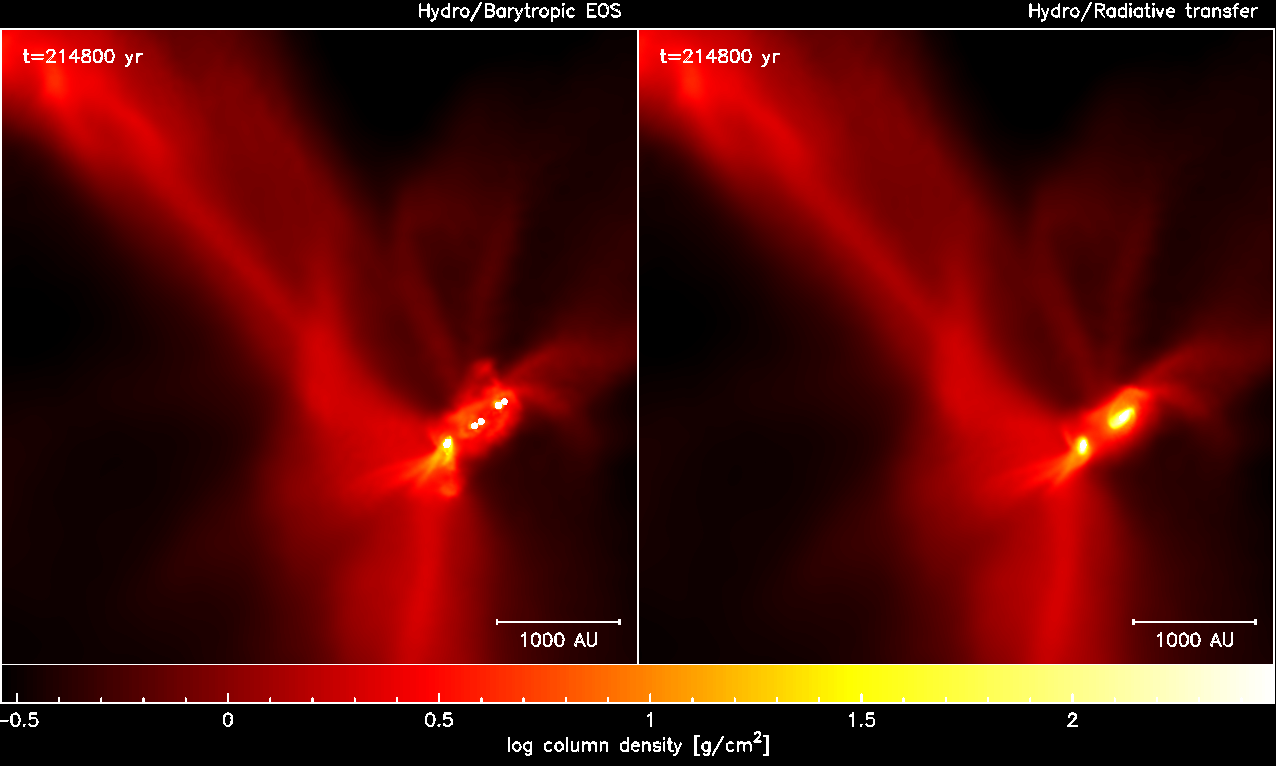
|
No magnetic fields (ie. pure hydrodynamics), using an approximate equation of state (left) and including the full effect of radiative
transfer in the gas (right).
[ standard quality (5.1Mb Quicktime) ] [ high quality (57Mb Quicktime) ] |
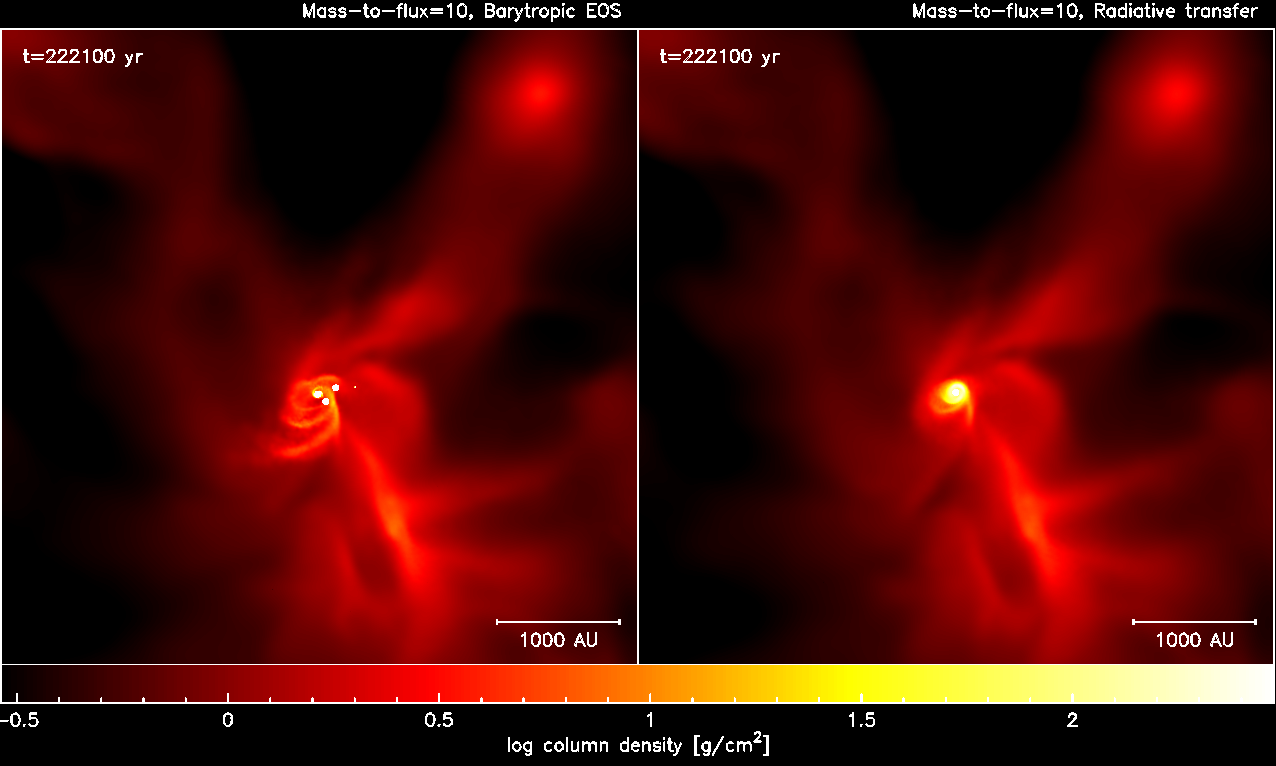
|
Weak magnetic field (mass-to-flux ratio = 10), using an approximate equation of state (left) and including the full effect of radiative
transfer in the gas (right).
[ standard quality (6.5Mb Quicktime) ] [ high quality (69Mb Quicktime) ] |
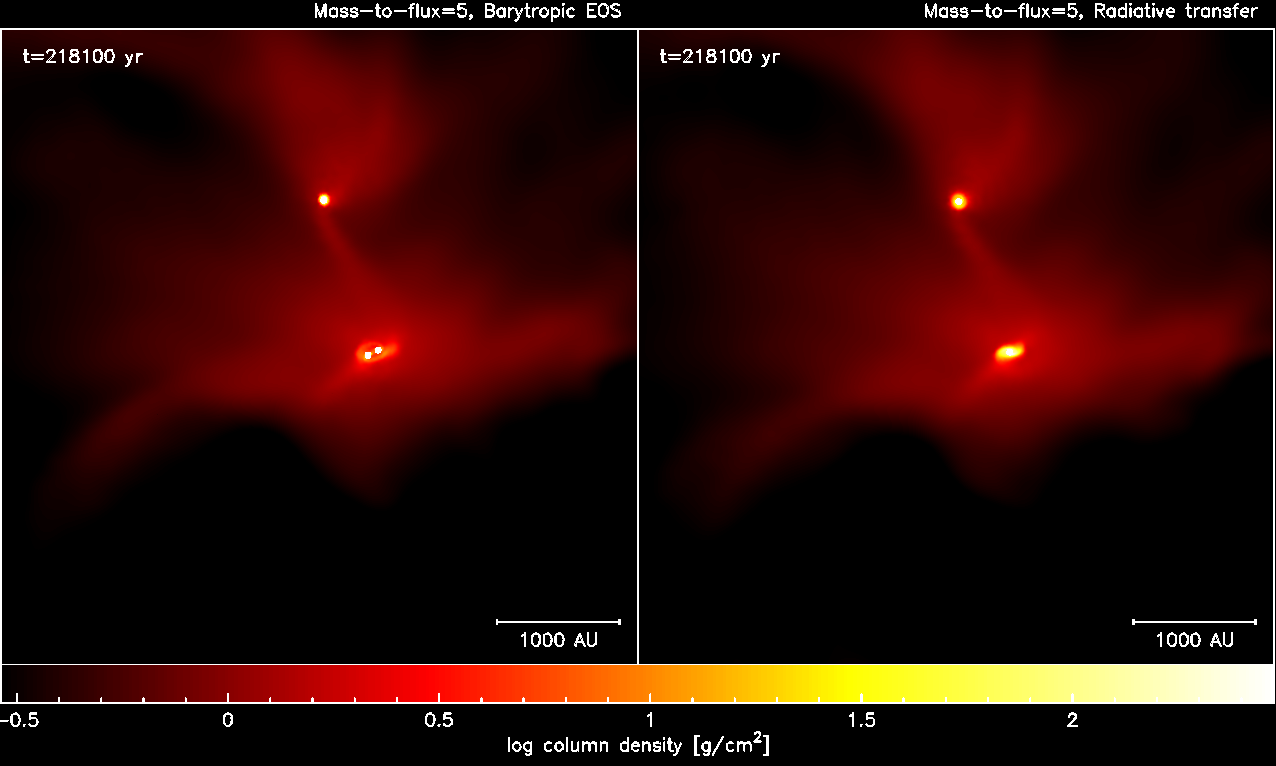
|
Moderate strength magnetic field (mass-to-flux ratio = 5), using an approximate equation of state (left) and including the full effect of radiative
transfer in the gas (right).
Here the magnetic field is strong enough to dominate the gas pressure, leading to qualitatively different features such as voids in the cloud which are supported by the magnetic field. [ standard quality (6.4Mb Quicktime)] [ high quality (64Mb Quicktime)] |
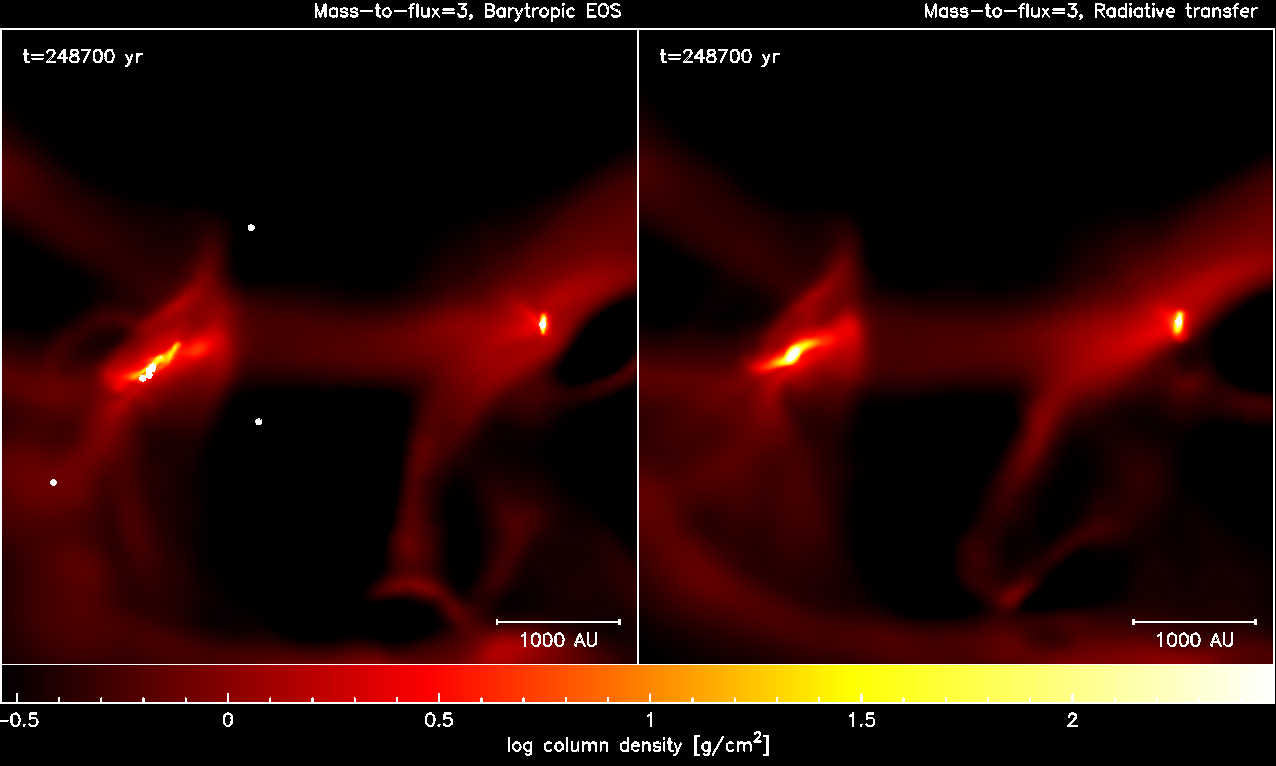
|
Strong magnetic field (mass-to-flux ratio = 3).
Note in particular the streaming motions in the vertical direction not present in the weak field runs which are produced by gas being channelled along magnetic field lines. [ standard quality (6.7Mb Quicktime) ] [ high quality (75Mb Quicktime) ] |
Image gallery
License
Use of movies and images is free for non-commercial purposes (e.g. scientific talks) under the terms of a Creative Commons Attribution-Noncommercial-Share Alike 3.0 license. On no account must images or movies be sold or used for commercial purposes without prior permission.
Any usage should give credit to "Daniel Price (Monash University) and Matthew Bate (University of Exeter)", preferably with a link to this web page.

